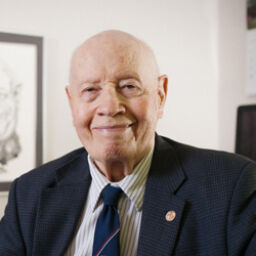When people die of disease, they are said to have died from natural causes. When they recover, the doctor gets the credit of curing them. —George Bernard Shaw.
 This may be an apocryphal tale, but a city in ancient China is purported to have had a public health care system that was the reverse of ours. Physicians were paid a monthly fee for each of their patients as long as the patients remained in good health. When a patient became ill, the fee was suspended.
This may be an apocryphal tale, but a city in ancient China is purported to have had a public health care system that was the reverse of ours. Physicians were paid a monthly fee for each of their patients as long as the patients remained in good health. When a patient became ill, the fee was suspended.
In that genuine health care system, the doctor’s main incentive was to keep patients well. So the emphasis was on scheduling frequent visits and tests; monitoring nutrition, exercise, and other essential factors; and promoting the healthiest possible lifestyle.
Obviously, if there ever really was such a medical practice, in China or anywhere else, it no longer exists in today’s industrialized countries with neoliberal economic and political systems. Instead of being paid to keep patients well, doctors are paid primarily for treating people after they get sick. So, rather than a true health care system, we actually have an illness-treatment system.
Some efforts at prevention are made in countries with socialist or otherwise progressive governments, but only one nation in the world today truly practises preventive medicine: Cuba.
Preventive care in Cuba
I could devote all the rest of this essay to Cuba’s public health care system, but I’ll just cite a few highlights. It is of course free, and covers prescription drugs, dental and vision needs, and all other aspects of health care, not just the services of physicians and hospitals. Doctors from neighbourhood clinics visit their patients’ homes weekly to check on the health and diets of all family members. Daily exercise sessions are scheduled for children.Cuba’s life expectancy of 80 years is one of the world’s highest, and its infant mortality rate of 4.90 (number of deaths of children under one year per 1,000 live births) is among the world’s lowest – well below the U.S. rate of 6.06. It’s not surprising that the World Health Organization has acclaimed Cuba’s health care system as a model for other countries to emulate.
Even if Cuba had not voluntarily designed a prevention-oriented system, it would have been forced to do so by the sweeping U.S. embargo, which deprived it of many medicines and medical equipment. This exigency was offset to a great extent by health-preserving measures, but also by the establishment in 1998 of its Latin American School of Medicine, which graduates large numbers of highly qualified physicians. The school is open to students from all countries, and has even attracted many from the United States. The lure of completely free tuition instead of having to pay $250,000 or more for a U.S. medical degree is hard to resist.
The only “payment” Cuba demands from these foreign medical students is that they agree, upon returning home after graduation, to launch their practices in the poorest communities in their respective countries.
As for the thousands of native Cubans who become doctors, many are sent around the world to help treat the victims of natural disasters, such as the earthquake that devastated Haiti in 2010. Cuban surgeons sent there performed 6,499 operations, compared to the 843 performed by the much-publicized U.S. hospital ship USNS Comfort that was anchored off the coast of Haiti.
In return for the services of its doctors, countries have provided Cuba with needed products it had been denied by the U.S. embargo. Venezuela, for example, has sent enormous quantities of much-needed oil to Cuba in return for the more than 15,000 medical practitioners Cuba has provided to work and live in that country’s poverty-stricken barrios.
Cuba has also developed an excellent medical research development centre. Among other achievements, it has produced its own versions of many of the vaccines it could not import because of the U.S. embargo. Even more impressive, Cuba has recently created an entirely new vaccine against lung cancer, which other countries are now eager to obtain and provide for their citizens.
An illness-dependent system
In sharp contrast to the prevention-driven Cuban system, our entire medicare apparatus is fixated on the treatment and (if possible) cure of illness rather than its prevention. Doctors, pharmaceutical companies, hospital administrators, nursing home owners, medical equipment makers – even the scores of charitable cure-seeking charity organizations – all operate on the assumption that “health care” begins only after people lose their health. Whether they admit it or not, they have developed a vested financial interest in sickness.This is not to imply that doctors, nurses, and other medical professionals want us to become ill. Far from it. Most physicians warn us about the dangers of smoking, overeating, alcoholism, and lack of exercise. They schedule annual checkups and push flu shots. But, basically, they are still locked into a system that is geared almost exclusively to dealing with ailments. It’s a system that assumes we’ll get sick, and even depends on our getting sick..
Again, I hasten to add that this is not to denigrate the dedication of the professionals who staff our illness-oriented system. Many of them would probably prefer to have a system designed mainly to preserve wellness, but, as it is, they have no choice but to defer their services until we stop feeling well.
Of course the adoption of a preventive approach would also require an extensive reform of our neoliberal economic system. Poverty, inequality, pollution, and most of the other social causes of illness stem from the excesses of global capitalism. In a decent, caring and equitable world – even an economically sane one – the preservation of health would naturally and normally be a top priority, if only because it would be far less costly than funding the treatment of disease and the desperate search for cures.
The more poverty, the higher the health costs
Take, for example, the inexcusably steep rate of poverty in Canada, which (according to Canada Without Poverty) afflicts an appalling 4.8 million of our citizens to some degree, including more than a million children under the age of 18. It’s a scourge that deprives most victims of lives that are comfortable and secure. It impairs their health when they can’t afford prescription drugs or dental care, or even adequate nutrition.In an average month 840,000 people in Canadaare so bereft that they cannot adequately feed themselves and have to rely on food banks to escape starvation.
In a country so bountifully endowed with wealth and resources, poverty levels of this magnitude – especially child poverty – are disgraceful and inexcusable.
UNICEF has ranked Canada in a dismal 21st place among the richest 29 nations in its rate of child poverty, and the OECD ranks Canada even worse on child poverty levels, putting us 24th among its 31 member countries.
And yet, poverty remains well down on the list of issues that Canadians and their governments seem concerned about. Poverty was hardly mentioned in party leaders’ debates during the federal election last year.
Our political leaders still contend they are devoting as much of their budgets to “fighting” poverty as they can afford. But in fact their failure to get serious about tackling poverty compels them to spend far more in treating the ills caused by poverty.
This crucial link between child poverty and health care was highlighted a few years ago in a study conducted by the Center for American Progress (CAP), a think-tank in Washington, DC. Its study found that Americans who were trapped in poverty as children – and they now number 40 million – are likely, when grown up, to become ill more often and more seriously, and thus require more costly health care treatment.
CAP researcher Harry Holzer stunned Congressional committee members when he told them that the increased medical costs to the United States stemming from child poverty amounted to a staggering $160 billion a year.
We have to be careful about applying this U.S. statistic to Canada, since treatment costs under our public system are significantly lower than in the primarily for-profit American system.
The Ontario Association of Food Banks estimates that we would save $7.6 billion a year on national health expenditures simply “by raising people in the lowest income bracket into the second lowest income bracket.” Instead, all this money is being squandered, in effect, to maintain atrociously high rates of poverty and illness instead of funding the remedial measures that would alleviate them.
Health and the environment
One of the most urgently needed health care priorities is to stop the pollution of our environment – the underlying cause of rapidly rising rates of many diseases.Collectively, we depend on the environment to sustain us, yet we continue irresponsibly to pollute the planet’s air, water, and soil. It shouldn’t surprise us then, that an environment we’ve sickened is in turn making us sick.
To recognize this grim reality, however, is not to imply that our “civilization” is doomed or that extinction is unavoidable.
Global warming remains a relatively slow process. So does the worsening of poverty and inequality. So does the decline of civic safety and social security. I have trouble retaining optimism, but I concede that there’s still time – if alarmingly limited – to restore some semblance of sanity and self-preservation to our collective behaviour.
Such a colossal endeavour, however, calls for nothing short of a concerted assault on the prevailing global economic system. Nearly all the social, economic, and environmental threats to our survival stem from the devastating effects of capitalism run amuck – and the indefensible failure of the world’s major governments to constrain capitalism’s power and greed.
Ed Finn was Senior Editor at the CCPA and editor of the CCPA Monitor from 1994-2014. Formerly, as a journalist, he worked at The Montreal Gazette and for 14 years wrote a column on labour relations for The Toronto Star. He also served for three decades as a communications officer for several labour organizations, including the Canadian Labour Congress and the Canadian Union of Public Employees. And yes, Ed is a true nonagenarian, having celebrated his 90th birthday this past summer. Stay tuned for more passages from The Nonagenarian’s Notebook.






